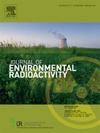基于210pb的近代沉积物测年模型。回顾
IF 2.1
3区 环境科学与生态学
Q3 ENVIRONMENTAL SCIENCES
引用次数: 0
摘要
基于210pb的定年方法可以在百年尺度上确定近代水生沉积物的绝对年龄。它被广泛用于支持各种各样的环境研究。然而,任何经验数据集都与无数的年代学兼容,这些年代学需要受到研究环境中特定沉积条件的一系列假设(模型)的约束,并通过独立的年代地层标志进行验证。在过去的50年里,已经开发了大约30个模型来应对自然条件的广泛多样性,其中许多模型是近年来出现的,同时还有一些新概念,如模型误差、χ-映射的吸引子或动力学反应输运,这些新概念改变了通常的观点和实践。本文旨在全面回顾这种测年方法,为最终用户提供更新的工具和新的理解,以提高其应用的可靠性。根据沉积体系的假设对模型进行了分类,通过对早期压实理论的重新研究和对饱和多孔介质微观世界的描述可以更好地理解沉积体系,在饱和多孔介质中,示踪剂的复合通量在物理和动力学反应输运方面经历了不同的沉积途径。文章回顾了质量流和初始活性浓度的自然变异性的经验证据。一些模型允许解析解,而另一些则需要数值技术。这篇评论是用实际案例研究中的例子来说明的。本文章由计算机程序翻译,如有差异,请以英文原文为准。
210Pb-based dating models for recent sediments. A review
The 210Pb-based dating method provides absolute ages determination in recent aquatic sediments at centennial scales. It is widely used to support a large variety of environmental studies. However, any empirical data set is compatible with an infinite number of chronologies that need to be constrained by a series of assumptions (models) on the particular sedimentary conditions of the studied environment, and validated with independent chronostratigraphic markers. During five decades, about thirty models have been developed to cope with the wide diversity of natural conditions, a good number of them appearing in recent years, along with new concepts such as model errors, attractors for χ-mapping, or kinetic reactive transport, which have changed common views and practices. This paper aims to present a comprehensive review of this dating method to provide to final users updated tools and a renewed understanding to improve the reliability of their applications. Models are classified in terms of their assumptions on the sedimentary systems, which are better understood from a revisited theory of early compaction and the description of the microcosms of saturated porous media, where composite fluxes of tracers undergo different deposition pathways in terms of physical and kinetic reactive transport. The article reviews empirical evidence on the natural variability in mass flows and initial activity concentrations. Some models allow analytical solutions, while others require numerical techniques. The review is illustrated with examples from real case studies.
求助全文
通过发布文献求助,成功后即可免费获取论文全文。
去求助
来源期刊

Journal of environmental radioactivity
环境科学-环境科学
CiteScore
4.70
自引率
13.00%
发文量
209
审稿时长
73 days
期刊介绍:
The Journal of Environmental Radioactivity provides a coherent international forum for publication of original research or review papers on any aspect of the occurrence of radioactivity in natural systems.
Relevant subject areas range from applications of environmental radionuclides as mechanistic or timescale tracers of natural processes to assessments of the radioecological or radiological effects of ambient radioactivity. Papers deal with naturally occurring nuclides or with those created and released by man through nuclear weapons manufacture and testing, energy production, fuel-cycle technology, etc. Reports on radioactivity in the oceans, sediments, rivers, lakes, groundwaters, soils, atmosphere and all divisions of the biosphere are welcomed, but these should not simply be of a monitoring nature unless the data are particularly innovative.
 求助内容:
求助内容: 应助结果提醒方式:
应助结果提醒方式:


